Beside Mele Cast S1 Wi-Fi display dongle, Mele also sent me their X1000 Blu-ray Navigation Android Box. This device is interesting as it features a new SoC, namely Telechips TCC8935 dual core Cortex A9, supports Blu-ray navigation, SATA drives, and comes pre-loaded with XBMC. You can read my Mele X1000 post to get the full hardware specifications. Today, I’ll show unboxing pictures and video, as well as photos of the PCB. In a few days, I’ll follow up with a complete detailed review.
Mele X1000 Unboxing Pics and Video
I’ve received the device in a carton box, with a sticker showing the specs, and providing a link to meleshop.com. The product is listed in this site but they don’t actually sell it there. and instead Mele X1000 can be purchased in Aliexpress for $179, including shipping via Singapore Post.
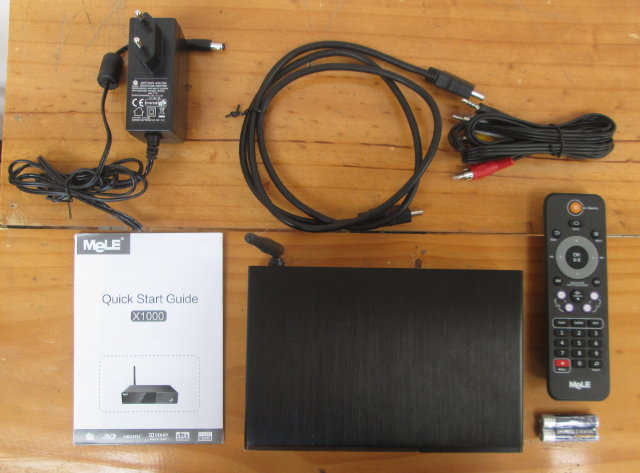
In the package, you’ll find the media player, an IR remote control with two AAA batteries, HDMI and AV cables, a rather large 12V/2A power supply, and a Quick Start Guide describing the ports, and mostly showing how to configure and use the device user’s interface and XBMC, after installing it.
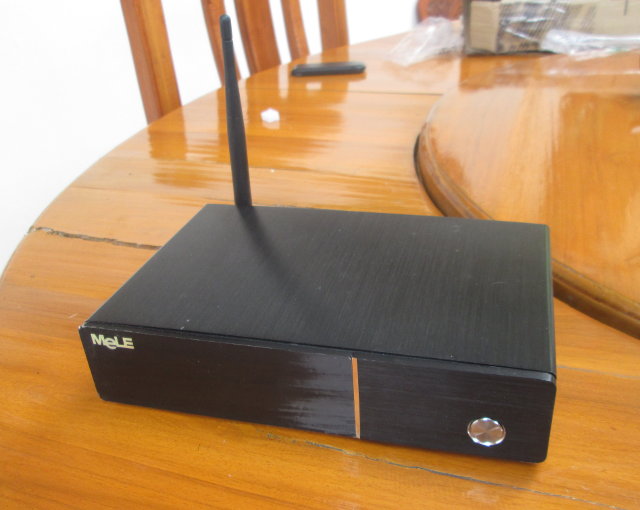
The enclosure is pretty large (19x12x4 cm) compared to recent Android TV boxes, but it’s made of aluminum, and not cheap plastic like most devices on the market. There’s a small LCD display on the left of the panel, as well as the power button.
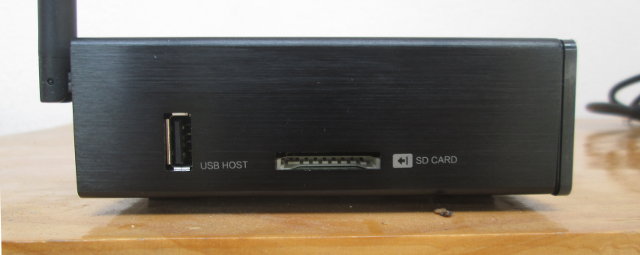
On the side, we’ve got one USB host port, and an SD card slot.

But most of the ports can be found on the rear panel: a micro USB port, AV out, DC-in, HDMI, optical S/PDIF, Ethernet and another USB port. On the top left, you’ll also find a the Wi-Fi antenna and a SATA connector. Unless there are some SATA enclosures on the market (not USB to SATA), your hard drive or SSD would just be places on the furniture, and on the top of the box with some isolation. On the bottom of the enclosure, there are some logos with CCC and CE certifications, XBMC, HDMI, Android, 3D, DTS Dolby, and Dolby Digital Plus. I’m confident these last two audio codecs will be supported by the player, as Telechips actually paid for the licenses…
You may watch the unboxing video below.
Mele X1000 Board
As usual I’ve opened the box. With metallic casing, it’s usually pretty simple, as you don’t have those pesky plastic clips. I just had to remove 4 screws on the bottom, and slide the case to access the board.
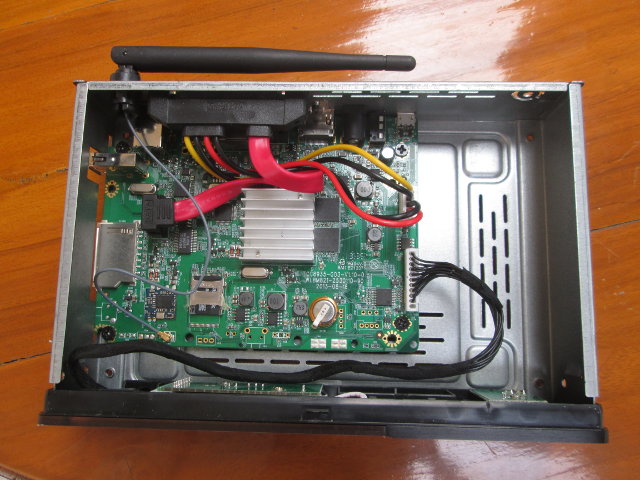
We can already see some interesting features on the board. There’s no 4GB NAND flash, but instead the company used a 4GB SD card. I only see this one with HiaPad Hi802 (GK802) mini PC. They are also using a battery, most probably for the RTC. Again, it’s something I’ve never seen on the other Android media players I’ve tested.
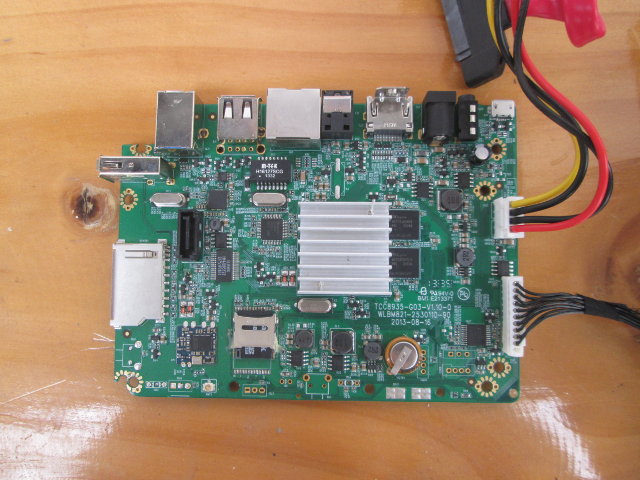
Then I remove 4 or 5 other screws, disconnected the Wi-Fi antenna, and the SATA cables to completely remove the board from the enclosure. You’ll notice a connector at the top left of the board, that’s actually hidden when the board is fitted into the enclosure. It’s a Standard-B USB 3.0 connector. Telechips supports USB 3.0, so I suppose in theory it would have been possible to use Mele X1000 as an external USB hard drive, but the company told me they won’t solder the connector for mass production. The serial console pins appear to be available at the bottom right corner on the picture. The silkscreen reads “TCC8935-g03-v1.10-0” and “WLBM821-2530110-90”. I’m not sure what the second stands for, but the first could be useful once sources are leaked or released.
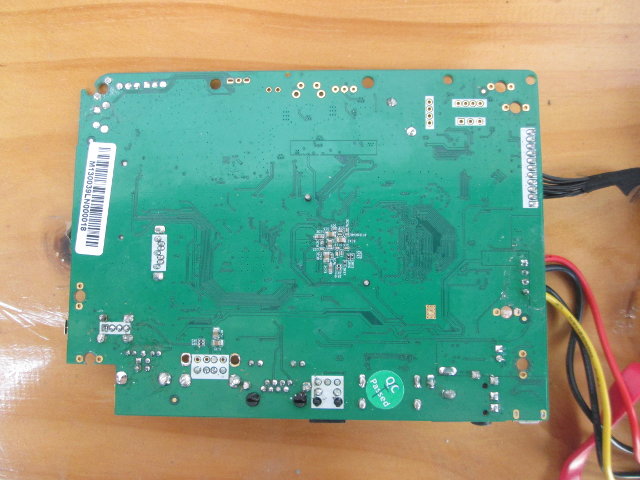
There’s not much to see on the back of the board.
That’s all for today, I’ve got some testing to do…

Jean-Luc started CNX Software in 2010 as a part-time endeavor, before quitting his job as a software engineering manager, and starting to write daily news, and reviews full time later in 2011.
Support CNX Software! Donate via cryptocurrencies, become a Patron on Patreon, or purchase goods on Amazon or Aliexpress




